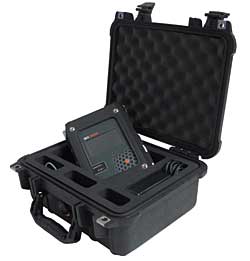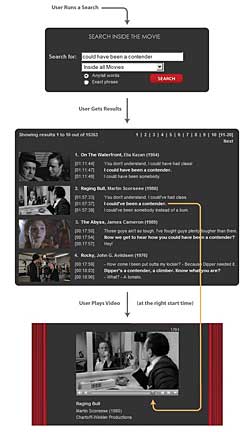2011 Editors' Picks for the Best in Streaming Video
Viewed from the outside, 2010 was the best year yet for online video, with all the relevant numbers—of time spent viewing, of advertising dollars spent, of compelling new content offerings—going in the right direction. But viewed from the trenches, it was … well, let’s just say it was as if the industry was struck by that old Chinese curse (which is neither that old nor at all Chinese, but that’s another story): “May you live in interesting times.”
So when the Streaming Media editorial team sat down to come up with our annual Editors’ Picks, we were struck not only by the number of clear “must haves” (the iPad, anyone?) but more so by the fact that two technology concerns—the HTML5 <video> tag and Google’s introduction of WebM and subsequent partial rejection of H.264—overshadowed all else, and not necessarily for the better. Not necessarily for the worse either. But it’s still too soon to tell if HTML5 and the somewhat related fact that we’re living in a two-codec world will result in unprecedented innovation or will merely cause unprecedented headaches for technologists, content publishers, and hardware and software vendors.
Still, even though the iPad, HTML5, and WebM dominated the news, there were plenty of other advances in technology that deserve praise without reservation. So here are the 2010 Streaming Media Editors’ Picks—the good, the bad, and the ugly.

Apple iPad
Sometimes, Apple lives up to even its own hype, and the iPad is perhaps the most revolutionary device the company has ever produced. Taking the app-based approach that Apple first introduced with the iPhone and pushing it even further, the iPad fundamentally changed the way that people consume media. More importantly, it’s changed the way that content publishers deliver media. Not just video services like Netflix, either; the apps from newspapers such as The Wall Street Journal, magazines such as Wired, and aggregators such as The Huffington Post integrate video seamlessly into their mostly text content for the closest thing you can get to an immersive experience on a device that you hold in your hands.
—Eric Schumacher-Rasmussen
Aviwest IBIS DMNG
 While other entrants in the portable cellular/Wi-Fi video broadcast unit category (for which we really do need a better name) have their strengths, this is a newer device and benefits from being the “latest” in a series of this genre of products. Rather than break this technology into the streaming sector with too much accolade,
While other entrants in the portable cellular/Wi-Fi video broadcast unit category (for which we really do need a better name) have their strengths, this is a newer device and benefits from being the “latest” in a series of this genre of products. Rather than break this technology into the streaming sector with too much accolade,
I am arranging to conduct a proper benchmark of each of these products as a separate feature later this year. Needless to say, I have been very impressed by this product in its own right—extremely low latency, four video input feeds, and small enough to clip on your belt. Now if only they’d come up with a better name.
—Dom Robinson
 Doovie
Doovie
The video search company formerly known as Cambridge IPTV rebranded as Doovle last year and expanded to become a full-service online video platform. But it’s still the company’s search technology that sets it apart on the market, which through a combination of textual soundtrack search, matching scene images, and timing data synchronisation delivers results right down to the moment within a video where the search term appears. Want to see Marlon Brando’s famous “I could have been a contender” scene from On the Waterfront? With the help of Doovle, the website MOVONOMY will put you right there—plus return Robert DeNiro’s recitation of it in Raging Bull along with dozens of other similar search results. Go ahead, try it at www.movonomy.com. Prepare to be amazed and addicted.
—Eric Schumacher-Rasmussen
Elemental Live
One year after the company showed off its file-based transcoding system, Elemental Server, the company is back with its GPU-based live encoding solution named, aptly, Elemental Live. In tests done in mid- to late 2010, the Elemental Live solution was able to handle a sizable number of profiles—from IPTV to mobile to web—on a single unit so well that it sets a standard for digital signal processing and general purpose computing-based encoding systems to match.
—Tim Siglin
